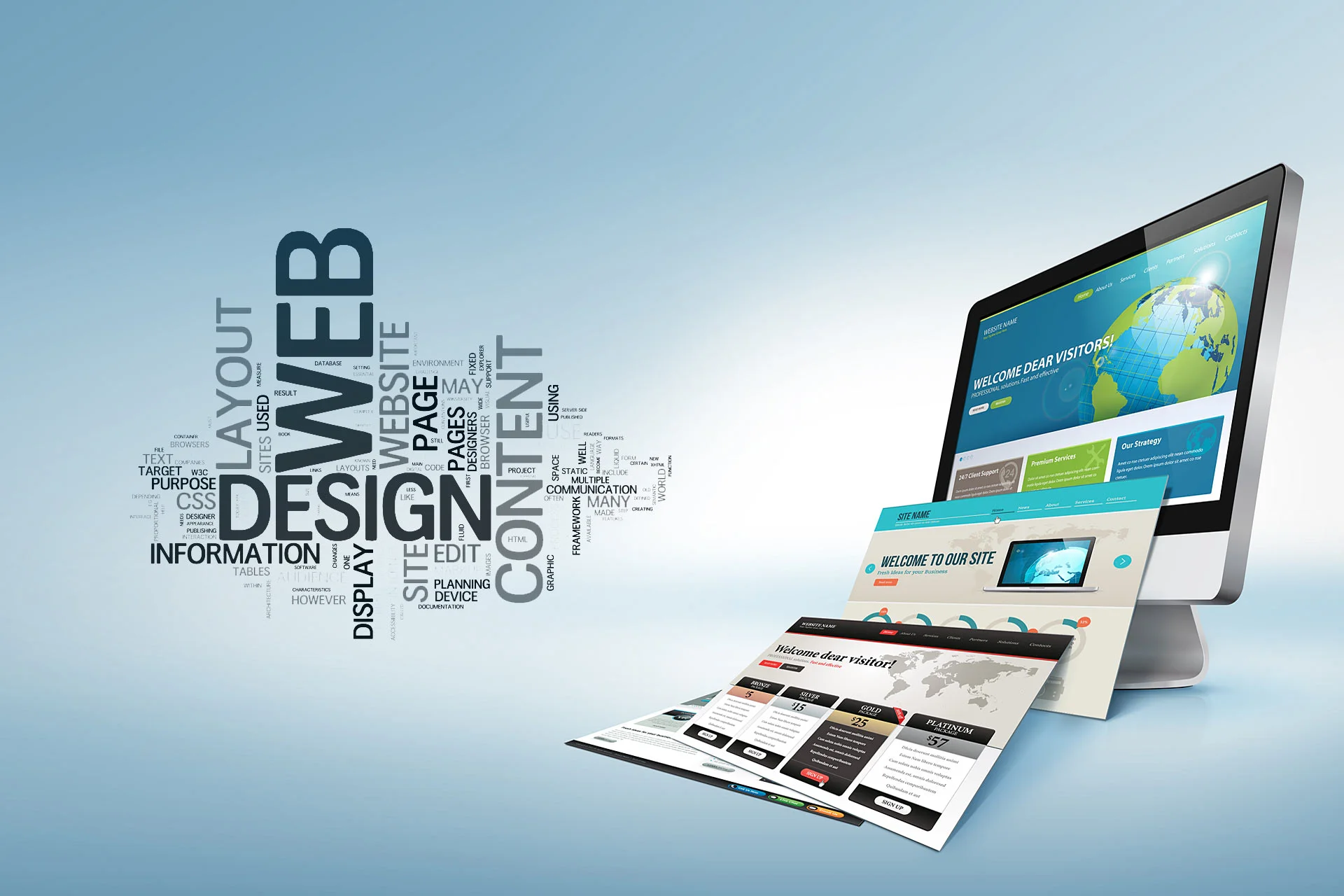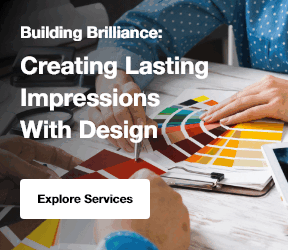B2B websites have evolved from simple digital brochures to dynamic platforms that foster customer relationships, drive conversions, and support business goals.
With the digital landscape constantly shifting, staying ahead of design trends is key to remaining competitive.
Modern B2B websites focus on streamlined navigation, AI-driven personalization, minimalist designs, and mobile-first approaches, ensuring an intuitive, user-friendly experience.
These trends aim to attract visitors, engage them, and convert them into loyal clients.
By adopting these trends, B2B companies can build aesthetically pleasing and high-performance websites that boost engagement, reduce bounce rates, and increase conversions, ensuring long-term success in an ever-evolving digital space.
Top 7 B2B Web Design Trends Reshaping 2025
This article delves into the B2B website design trends that are defining the industry in 2025.
And the top b2b web design trends are as follows:
- AI-Powered Design and Personalization
- Design Combined with Bold Typography Impact User Experience
- Responsive Design & Enhanced Accessibility
- Integration of Chat Bots and Conversational Interfaces
- The Rise of Storytelling Through Visual Content in B2B Web Design
- Embracing Sustainability and Ethical Practices in Web Design
- A Growing Trend for Voice Search Optimization
1. AI-Powered Design and Personalization
Artificial Intelligence (AI) is reshaping B2B website design by making interactions smarter and more personal. How to Find High Performing Landing Pages is crucial for understanding the effectiveness of AI-driven personalization, which ensures each visitor gets a tailored experience. Instead of offering a generic experience, AI-powered platforms learn from user behavior, preferences, and browsing patterns to deliver content in real time.What Is B2B Marketing Automation helps businesses implement AI-driven personalization at scale, ensuring each visitor gets a tailored experience.
This ensures that every visitor feels the site was designed with their unique needs in mind. For instance, what is the digital marketing strategy that tracks users across the web allows businesses to leverage AI for more accurate personalization.
Key benefits of AI in B2B website personalization include:
- Content Recommendations: AI studies user journeys to suggest relevant resources such as case studies, blogs, or white papers, keeping visitors engaged longer.
- Dynamic Product Displays: Product showcases adapt automatically based on user preferences, ensuring decision-makers see what’s most relevant to them.
- Optimized Call-to-Actions (CTAs): AI tests and adjusts the placement, timing, and wording of CTAs to maximize conversions and guide visitors toward meaningful actions.
By continuously learning from each interaction, AI not only improves accuracy but also strengthens the bond between businesses and prospects.
This results in higher engagement, better customer satisfaction, and ultimately, more successful conversions.
2. Design Combined with Bold Typography Impact User Experience
Minimalist design with bold typography creates a clean, focused user experience, enhancing readability and strengthening brand communication.
Here’s how to do it effectively:
- Minimalism in B2B Design: More businesses are embracing minimalist web design for its simplicity. The goal is to keep the layout uncluttered and easy to navigate, allowing users to focus on essential content without distractions. B2B vs B2C design also plays a role in shaping the user experience, as these two models demand different approaches to typography and layout.
- Role of Bold Typography: Bold typography draws attention to important text, such as headlines and CTAs, ensuring they are easily noticed. It also reinforces the brand's identity, creating a strong visual presence that aligns with the business’s values.
- Enhancing Readability and Brand Identity: Bold fonts help deliver a clear message, making it easier for users to absorb information quickly. This design choice strengthens the overall aesthetic and voice of the brand.
- Reducing Cognitive Load: A minimalist approach reduces cognitive load, simplifying the website layout to highlight the essentials. This results in a more intuitive user experience, where visitors can find the information they need easily, leading to better engagement and a higher likelihood of conversion.
This combination of minimalist design and bold typography not only creates an aesthetically pleasing layout but also improves user engagement, making the website faster and easier to navigate.
Explore Our B2B Web Design and Development Services!
3. Responsive Design & Enhanced Accessibility
As mobile devices become the primary platform for B2B research and decision-making, mobile-first design is crucial for 2025 websites. Optimizing for mobile and integrating the Best eCommerce Platform for Small Business features can ensure a seamless experience across devices.
Responsive design further complements this by adjusting the layout, images, and content to fit various screen sizes, ensuring the site looks great and functions well across all devices.
Mobile optimization not only improves the user experience but also boosts best lead generation for realtors by ensuring the site is accessible and optimized across all platforms.
- Mobile-First Design: Prioritizing mobile optimization enhances user engagement by offering a smooth, frictionless experience on mobile devices.
- Responsive Design: Adjusts the website's content and layout to fit different screen sizes, improving the user experience on desktops, tablets, and smartphones.
- Increased Conversion Rates: A mobile-friendly, responsive site removes barriers, making it easier for users to take actions like filling out forms, making purchases, or contacting the business.
Moreover, ensuring accessibility is a key element of modern B2B websites.
Not only is it a legal requirement in many regions, but it is also vital for creating an inclusive online environment.
Accessibility features allow users with disabilities to navigate and interact with the site efficiently, enhancing their overall experience.
- Keyboard Navigation: Allows users with motor impairments to navigate the site without a mouse.
- Text-to-Speech: Enables visually impaired users to hear content read aloud.
- Alt Text for Images: Ensures screen readers can describe visual content.
- Contrast and Readability: Improves text visibility for users with visual impairments by ensuring good contrast between text and background.
- Text Size Adjustment: Lets users resize text for better readability based on their preferences.
Incorporating both mobile-first and accessibility features helps businesses create websites that engage users, increase conversions, and provide an inclusive experience for everyone.
4. Integration of Chatbots and Conversational Interfaces
AI-driven chatbots and conversational interfaces play a crucial role in enhancing user engagement on B2B websites.
These tools enable real-time, personalized communication with visitors, providing immediate assistance, answering queries, and guiding them through the website.
Is affiliate marketing legit? This question often comes up in B2B spaces when considering how to monetize digital content or drive traffic using affiliate links.
Key benefits of AI chatbots and conversational interfaces:
- Real-Time, Personalized Engagement: Chatbots provide instant, tailored interactions that significantly boost user engagement and satisfaction.Automated Lead
- Qualification: By gathering valuable information, chatbots help businesses prioritize and focus on high-potential prospects.
- Instant Responses and Reduced Wait Times: Chatbots improve the overall customer experience by providing quick answers, which in turn enhances user satisfaction and drives conversions.
The integration of chatbots into B2B websites brings significant benefits in terms of user engagement and efficiency.
They not only enhance customer interaction but also streamline lead qualification processes by asking targeted questions and gathering crucial information.
5. The Rise of Storytelling Through Visual Content in B2B Web Design
Storytelling through visual content has emerged as a transformative trend in B2B web design, allowing businesses to connect with visitors in a more authentic and engaging way.
Rather than relying solely on text, visual elements such as videos, case studies, and infographics provide a powerful means of conveying a brand’s message in a dynamic and compelling format.
Using case studies is one way oil and gas marketing agency is leveraging visual content to demonstrate their industry expertise.
This shift toward visual storytelling is driven by the need for businesses to stand out in an increasingly crowded digital landscape.
Visual content is not just more engaging but also helps communicate complex ideas quickly and clearly, making it an essential tool for modern B2B websites.
- Videos: Serving as an effective medium for product demos, client success stories, or service explanations, videos offer a dynamic way to engage users. They simplify communication, allowing businesses to showcase their offerings in a way that static images or text cannot.
- Case Studies: These real-life examples show potential clients how products or services have successfully solved real problems. Case studies build credibility, showing tangible results that resonate with prospects.
- Infographics: By turning complex data into visually digestible formats, infographics help simplify information, making it easier for users to grasp and retain. They’re particularly effective for conveying statistics, processes, or comparisons.
Visual content not only enhances user engagement but also plays a pivotal role in establishing trust.
When businesses use visuals to share their success stories and real-world results, they humanize their message and create an emotional connection with their audience.
This approach fosters trust by demonstrating the impact and value of their offerings, making it easier for potential clients to relate and connect.
6. Embracing Sustainability and Ethical Practices in Web Design
As companies continue to embrace sustainability, their digital presence must align with these values to contribute positively to the environment and society.
Sustainable web design is focused on reducing environmental impact while ensuring that websites reflect ethical practices.
Agencies offering digital marketing services often implement eco-friendly strategies to reduce carbon footprints.
- Energy Efficiency: Sustainable web design prioritizes reducing energy consumption and lowering carbon footprints by optimizing the website's performance.
- Eco-Friendly Hosting: Choosing hosting providers that use renewable energy sources or invest in carbon offset initiatives helps reduce the environmental impact of digital platforms.
- Resource Efficiency: Efficient use of resources, from minimizing server load to streamlining content delivery, helps conserve energy and reduce waste.
In addition to environmental considerations, promoting social responsibility is crucial in web design.
This includes supporting ethical business practices, such as fair trade, and ensuring inclusivity and accessibility for all users.
- Inclusive Design: Ensuring that websites are accessible to people with disabilities fosters inclusivity and demonstrates social responsibility.
- Ethical Business Practices: Aligning with companies that support fair labor practices, diversity, and community welfare contributes to positive social impact.
By integrating both environmental and social responsibility into web design, businesses can create a more sustainable digital presence.
This approach not only enhances brand reputation but also builds trust with customers who value sustainability and ethical practices.
7. A Growing Trend For Voice Search Optimization
As businesses strive to improve user experience and accessibility, voice search offers an intuitive and hands-free way for users to interact with websites.
This technology allows visitors to use voice commands to search for information, navigate the site, and complete tasks, providing a seamless, efficient, and user-friendly experience.
Here’s why businesses are incorporating these changes:
- Improved User Accessibility: Voice search helps make websites more accessible, particularly for people with disabilities or those who prefer hands-free interaction.
- Enhanced Convenience and Speed: Voice search offers a faster alternative to traditional text search, enabling users to access key content or complete actions more efficiently.
- Impact on SEO Strategy: To optimize for voice search, B2B websites need to focus on natural language processing (NLP) and target long-tail keywords that mirror how people speak rather than how they type.
- Increased Mobile and Smart Device Usage: As mobile devices and smart speakers become more integrated into daily life, optimizing for voice search helps businesses reach their audience across various devices.
Incorporating voice search optimization into a B2B website is more than just a trend; it’s a strategic move to improve user engagement, enhance accessibility, and stay ahead in the competitive digital landscape.
Conclusion
As we move into 2025, B2B web design is evolving with trends that prioritize personalization, user experience, and technological integration.
Key trends such as AI-powered design, minimalist layouts with bold typography, mobile-first optimization, and voice search adaptation are shaping the future of business websites.
These innovations not only enhance the user experience but also drive engagement and conversions.
B2B businesses are encouraged to embrace these trends to stay competitive and ensure their websites are engaging, functional, and future-proof.
By doing so, they can better meet the needs of their users, build stronger customer relationships, and ultimately achieve greater business success.
Embracing B2B marketing services in the process will help further optimize these efforts.
To stay ahead in this rapidly changing digital landscape, businesses must continue to innovate, adapt to new technologies, and prioritize user-centric design.
Embracing these web design trends will help businesses not only enhance their digital presence but also foster long-term growth and success.









